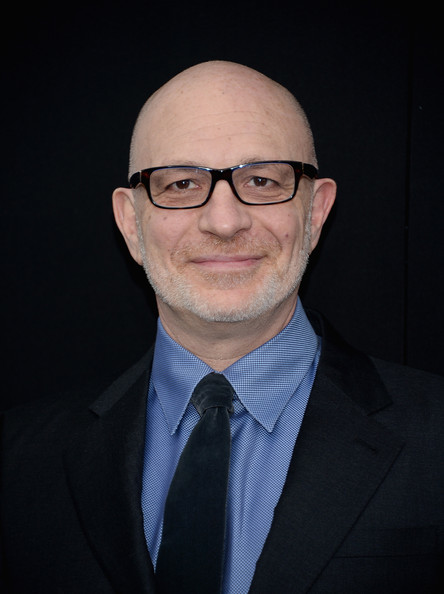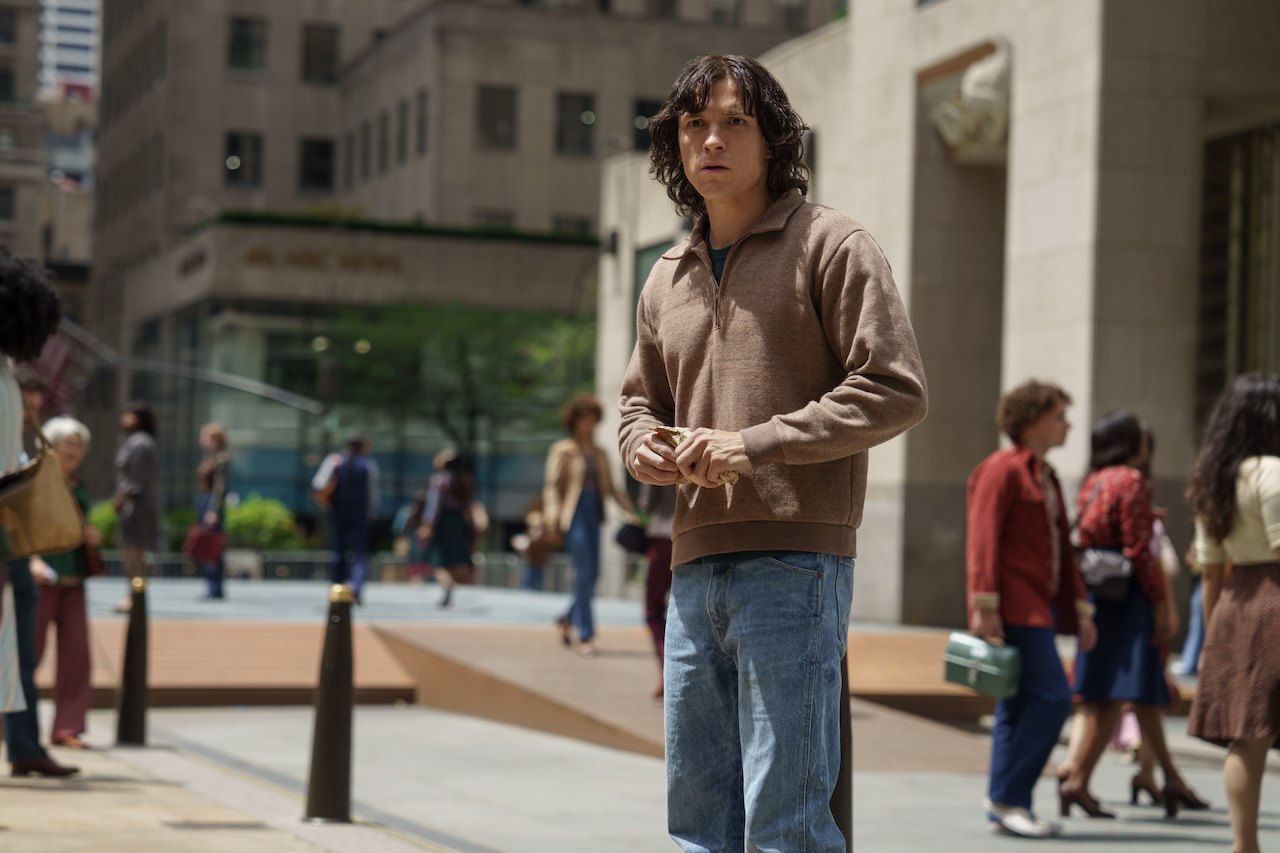The Crowded Room examines the uneasy world of Danny Sullivan (Tom Holland) after his arrest following a shooting in New York City in 1979. The gripping TV series is based on a man with mental health issues who was acquitted of a crime for reasons of mental health. The TV series is partially told through a series of interviews with interrogator Rya Goodwin (Amanda Seyfried) as it unwinds and meanders to reveal the key aspects of Danny’s past that shaped his current mindset.
The story is inspired by real life cases and the novel The Minds Of Billy Mulligan by Daniel Keyes. Creator Akiva Goldsman (A Beautiful Mind, Star Trek: Strange New Worlds) spoke with Creative Screenwriting Magazine to discuss what attracted him to this story.
“The thing I have always found fascinating is the meta-truth that we think of mental illness as an evolving definition of a diagnosis that is fluid and nowhere near as empirical as people believe,” declares Goldsman. The Oscar-winner refers to the Diagnostic and Statistical Manual of Mental Disorders (DSM) which is the basis for psychiatric assessment. “Mental health diagnoses are far more general and subjective than anybody imagines.” This is in stark contrast with assessing physical health which is a lot more objective.
“Over the course of history, behaviors that we consider “typical” or “atypical” were often improperly considered as ‘not real’ or were actually used against people by dismissing them as chosen negative behaviors.” In this case it was Dissociative Identity Disorder (DID) or Multiple Personality Disorder for Danny Sullivan.
Goldsman didn’t carry all the intricacies of Mulligan’s case into The Crowded Room in order to make it Danny Sullivan’s story. (Hence the ‘inspired by’ true events statement). “We fictionalized the crime. We fictionalized the location. We started to turn the story into something that was a bit more of a study of all sorts of trauma rather than just DID,” declares Akiva.
The thematic core of hope was initially true in the book, but Billy Mulligan’s life eventually turned complicated again. “We wanted a more clearly hopeful narrative in The Crowded Room and also to show the other faces of trauma. We wanted to talk about PTSD and we wanted to talk about feelings of abandonment,” the writer elaborates.
As we become more familiar with Danny Sullivan in The Crowded Room, we learn more about his traumatic response and the generational cycle of abuse that he endured.
Akiva Goldsman did not want to create a case study for DID, but rather to create empathy for a person in mental distress. Danny has a diseases that can be treated. A key challenge in writing non-neurotypical characters is to “other” them. “There can be an element of objectification and dissimilarity. If one is suffering from dissociation and dysregulation – distance from the world, isolation, and absenteeism, the feelings that are triggered seem to make perfect sense to the sufferer. The deeper in you get, the more the mind does a dance to tell you that what you’re perceiving is actual,” ponders Goldsman.
Furthermore, the writer externalized Danny’s behaviors, “so the audience could be more inside his experience before the conversion in the middle of the show into a more objective reality.”
The Pilot Episode
The key functions of the pilot episode in any TV series is to create a world and invite audiences into the show until the end of the season. Most of Akiva Goldsman’s work has been in the feature film space, so writing a serialized television series was a change of process. “I’ve spent the lion’s share of my professional life writing features. Everything is bad in the first act in a feature. Everything has to go wrong in order for it to get fixed in the third act,” he states.
Goldmsan perceives writing for television slightly differently, because of its structure and longer format. Audiences shouldn’t necessarily be asked to revisit the first act in a feature. The conflict is presented and the story moves forward. “In television, you have to give the beginnings of conflict, but also direct, indirect, or misdirect the audience to where the resolution might come from throughout.”

Akiva Goldsman
In a feature film, the central question is posed in Act 1, the main conflict happens during Act 2, and a resolution is reached in Act 3. These steps aren’t as clear cut in writing for television because there are aspects of all three weaved throughout. “In The Crowded Room, we needed to incite the narrative and introduce the character Danny early on in the series. Then we create the idea that there is a mystery to be solved.”
The Crowded Room heavily relies on interviews with Rya and time jumps between the past and present which could be jarring to some audiences. “I think that this particular show, and that kind of cutting back effort, actually requires a tremendous amount of patience on the part of the audience,” continues the writer. “I’m very glad it rolls out week by week because I think that when you try to watch all ten episodes in one session, it can kind of break you.”
As a skilled wordsmith, Goldsman ensures these jumps are subtle. “If you supersaturate yourself with time shifts, they can start to fall apart. You have to be careful and thoughtful about how you use them.”
“The show also jumps around in terms of point of view, framing device, and subjective and objective reality. It asks a lot of the audience. If somebody invests in it, they get rewarded. And sometimes, reaching outside a conventional structure can be a way of creating engagement and also generating emotion,” he muses.
Transferring The Story Emotions
A key tenet of a psychological thriller is creating and maintaining tension. This is essential in a psychological thriller. We asked the writer how he creates tension in The Crowded Room. “None of what compels the viewer can be answered with calculation,” cautions Goldsman. “That doesn’t mean that there aren’t tools that we all employ to manipulate tension. And many of them are as simple as the least amount necessary, gravity, clarity, beauty, aesthetics, or pleasure, or pain being evoked. But fundamentally what they come down to, are always about what engages you as a writer. I don’t think that just because something engages you as a writer it will engage someone else. But I’m pretty sure that if it doesn’t engage you as a writer, it won’t engage anybody else. There is this magic of emotional transport that happens across the page.”
“Typically, if I write something and I am heartbroken by the writing of it, that moment that I’m managing to create, then that’s the best chance I have of the right reader having that same emotional experience. And the magic of it is they’re dislocated in space and time, and that really is magic.”
Akiva offers further writing advice. “Don’t be indulgent or assume that they will like your story just because you like it. Make sure that you are doing everything you can to like it and pipe them in.” You can’t force the process.
“I find that close proximity to the protagonist is the most effective emotional delivery system for me. Even in The Crowded Room which has an ensemble cast or an episode told from another character’s point of view, I still want everybody to be up close to Danny, which is essentially a subjective point of view. Even though it starts to broaden out, we finally return to, and mostly stay with Danny’s singular experience.”
Akiva Goldsman recalls that the scenes of Danny’s emotional abuse were the most difficult to write. Most of them were off-screen. “It’s hard to talk about what adults do to children far too frequently in this world. It’s something that we really shy away from talking about because it’s so powerful and so distasteful. And then there are the ramifications of abuse.”
After careful consideration, the writer believes one of the most pivotal scenes inThe Crowded Room occurs when Danny is in the courtroom “speaking about Adam, about the part of him with the shame that only children can have when abused by adults.”
After the closing credits roll, Goldsman reinforces his message of hope for Danny Sullivan. He’s painting and healing. He’s going to be all right.
